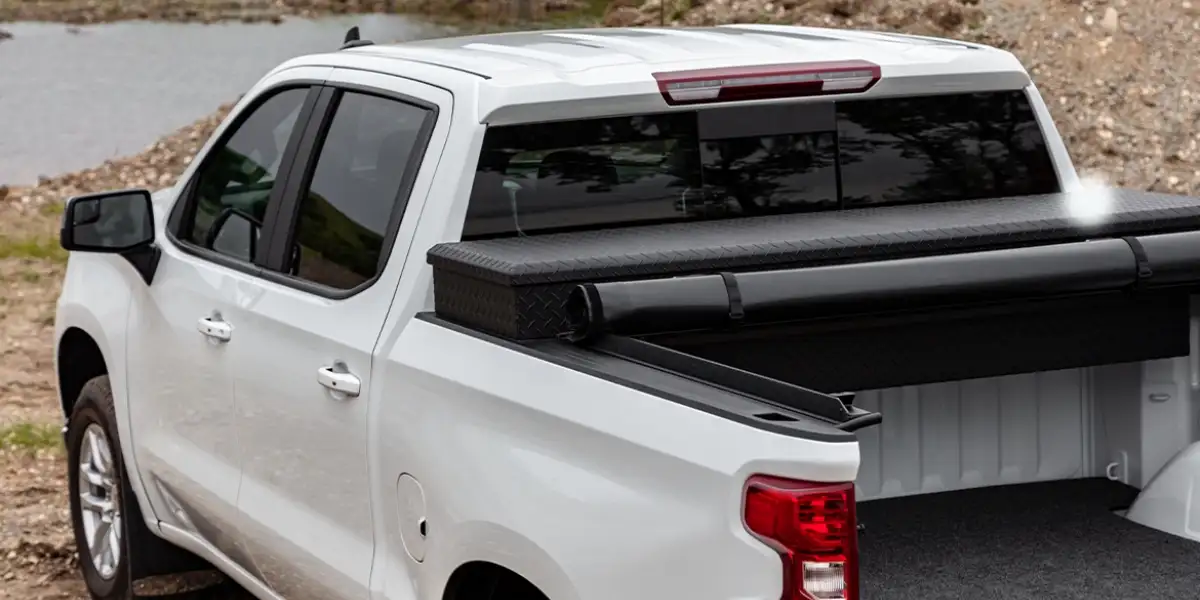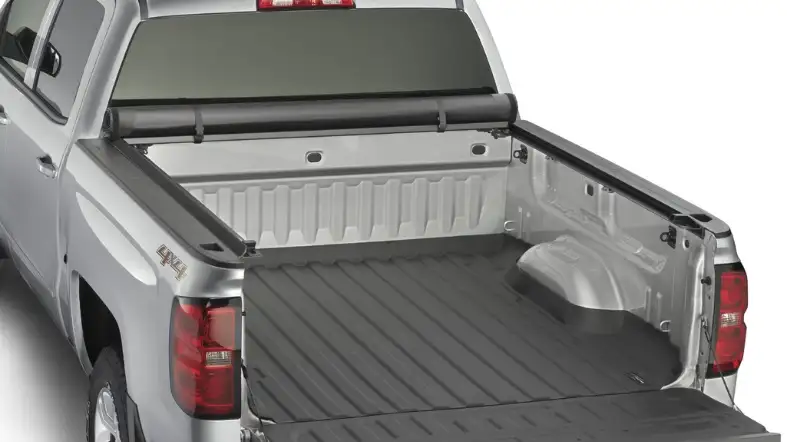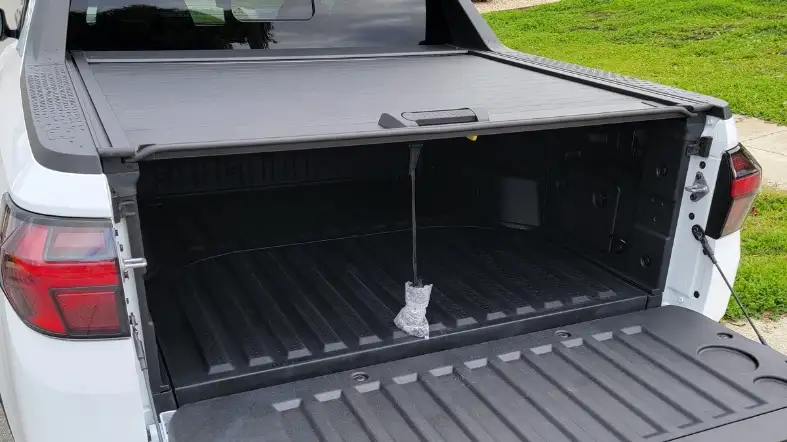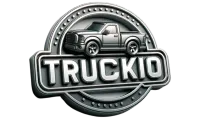Are you considering adding a bedliner to your truck but unsure if it can work in harmony with a tonneau cover? Curiosity piqued? We’ve got you covered!
Today we’ll address every truck owner’s question: Can you use a tonneau cover with a bedliner?

Can You Use A Tonneau Cover With A Bedliner?
Yes, most tonneau covers can be used with under-the-rail and spray-on bed liners. Retractable covers may need trimming at the bulkhead. Installing a cover with an over-the-rail bed liner takes more time and effort.
How to Install a Tonneau Cover with a Bed Liner?
Here is how to install a tonneau cover with a bed liner:
Step 1: Preparing the Bed Liner
First, ensure that the bed liner is clean and free of any debris or dirt. Use a brush or a vacuum cleaner to remove any loose particles.
Take a close look at the liner for any signs of damage or wear. If you spot any issues, address them before proceeding with the installation.
It’s crucial to have a sturdy and intact bed liner to provide a solid foundation for the tonneau cover.
Step 2: Measuring the Bed
Measure the length and width of your truck bed to determine the appropriate size for your tonneau cover.
Make sure to account for any accessories or modifications that may affect the dimensions, such as bed rail caps or toolboxes.
Refer to the manufacturer’s instructions or website to find the correct size for your specific truck make and model.
Step 3: Gathering the Necessary Tools
Before starting the installation process, gather all the tools you’ll need. This typically includes a socket wrench or screwdriver, depending on the type of fasteners used.
Additionally, check the tonneau cover manufacturer’s instructions to see if any specialized tools are required.
Having everything on hand will streamline the installation and prevent unnecessary interruptions.
Step 4: Positioning the Tonneau Cover Rails
Carefully position the tonneau cover rails on the truck bed, aligning them with the bed liner edges.
Some tonneau covers have pre-drilled holes that match up with the bed liner’s mounting points, while others may require drilling new holes.
Follow the manufacturer’s instructions for your specific tonneau cover model to ensure proper alignment.
Step 5: Attaching the Tonneau Cover Rails
Using the provided hardware, attach the tonneau cover rails to the bed liner.
This usually involves inserting screws or bolts through the holes in the rails and tightening them securely with a socket wrench or screwdriver.
Make sure the rails are firmly attached to the bed liner, providing a stable base for the tonneau cover.
Step 6: Installing the Tonneau Cover
Once the rails are securely in place, carefully unroll or unfold the tonneau cover and position it over the truck bed. Ensure that the cover is centered and aligned with the rails.
Depending on the type of tonneau cover you have; you may need to attach it to the rails using clamps, brackets, or other fastening mechanisms.
Follow the manufacturer’s instructions for your specific tonneau cover to complete the installation.
Step 7: Adjusting and Testing the Tonneau Cover
After the tonneau cover is installed, take a moment to adjust it for proper fitment and functionality.
Ensure that the cover is evenly tensioned and securely fastened to the rails. Test the cover by opening and closing it multiple times to make sure it operates smoothly without any issues.
Adjust the tension or alignment if necessary to achieve the desired result.
Step 8: Final Check and Cleanup
Once you are satisfied with the tonneau cover installation, do a final check to ensure everything is in place and properly secured.
Verify that the cover latches or locks securely, providing adequate protection for your truck bed.
Clean up any debris or packaging materials from the installation process, leaving your truck bed clean and tidy.
Types of Bedliners Compatible with Tonneau Covers

There are 2 types of bedliners that are compatible with tonneau covers:
Below-the-rail bedliners
These bedliners are installed below the bed rails, which means they do not interfere with the installation of a tonneau cover.
Below-the-rail bed liners are typically made of durable material, such as rubber or plastic, and they provide good protection from the elements and scratches.
Spray-On Bedliners
Offering a custom-fit solution, spray-on bed liners are applied as a liquid coating that adheres to the truck bed’s contours.
The resulting durable and textured surface protects against impact, corrosion, and UV damage.
Spray-on bed liners maintain the truck bed’s original dimensions, allowing tonneau covers to fit seamlessly without compromising functionality.
Benefits of Using a Tonneau Cover with a Bedliner
Here are the benefits of using a tonneau cover with a bedliner:
Protection from the Elements
A tonneau cover, when combined with a bedliner, provides exceptional protection for your truck bed against various weather conditions.
It shields your cargo from rain, snow, and harsh sunlight, preventing moisture damage and UV fading.
The cover acts as a barrier, keeping your belongings safe and dry during transit or when parked outdoors.
Enhanced Security
When you install a tonneau cover with a bedliner, you significantly improve the security of your truck bed.
It acts as a deterrent against theft and helps keep your valuables out of sight. The cover conceals your cargo, preventing prying eyes from seeing what’s inside.
This added layer of security can offer peace of mind, especially when you need to leave your truck unattended.
Improved Fuel Efficiency
Believe it or not, a tonneau cover with a bedliner can positively impact your truck’s fuel efficiency.
The cover reduces drag by minimizing wind resistance, particularly when driving at higher speeds.
By streamlining the airflow over the truck bed, the cover helps to improve fuel economy, potentially saving you money at the gas pump.
Organized and Neat Truck Bed
Combining a tonneau cover with a bedliner helps you maintain a clean and organized truck bed.
The cover keeps your cargo contained and prevents it from shifting during transit. Additionally, a bedliner provides a non-slip surface, ensuring that your items stay in place.
With a tidy and well-organized truck bed, you can easily locate and access your belongings whenever you need them.
Versatility and Flexibility
Tonneau covers come in various types, such as roll-up, folding, or retractable covers, offering you a range of options to suit your needs.
Paired with a bedliner, these covers provide versatility and flexibility. You can choose a cover that allows you to access the entire bed or opt for one that provides partial access.
This adaptability enables you to customize your truck bed setup based on the cargo you’re hauling.
Increased Resale Value
Investing in a tonneau cover with a bedliner can enhance the resale value of your truck.
These accessories protect the bed from scratches, dents, and other damages, preserving its condition over time.
When it comes time to sell or trade in your truck, having a well-maintained bed can attract potential buyers and help you command a higher resale price.
6 Maintenance Tips for Tonneau Covers and Bedliners

Here are the 6 maintenance tips for tonneau cover and bedliner:
Regular Cleaning
Regularly cleaning your tonneau cover and bedliner is crucial to remove dirt, debris, and grime that can accumulate over time.
Start by using a mild soap or specialized cleaner recommended by the manufacturer.
Dilute the soap or cleaner in water and apply it to the tonneau cover and bedliner using a soft brush or cloth.
Gently scrub the surfaces, paying attention to any particularly dirty areas.
Rinse thoroughly with water to remove all traces of soap or cleaner. Avoid using harsh chemicals or abrasive materials that could damage the surfaces.
Lubrication
To keep your tonneau cover operating smoothly, it’s important to lubricate moving parts regularly. Check the manufacturer’s instructions for recommended lubricants.
Apply a small amount of lubricant to hinges, locks, and any other moving components, ensuring even distribution.
Wipe off any excess lubricant to prevent the accumulation of debris.
Lubricating these parts will help prevent rust, corrosion, and stiffness, allowing for easy opening and closing of your tonneau cover.
Inspecting and Repairing
Regularly inspect your tonneau cover and bedliner for any signs of damage or wear.
Look for tears, cracks, loose fasteners, or other issues that may compromise their performance.
If you spot any problems, address them promptly. Depending on the severity of the damage, you may need to replace a damaged component or seek professional assistance.
By identifying and repairing issues early on, you can prevent further damage and ensure the longevity of your tonneau cover and bed liner.
Protecting Against UV Exposure
Exposure to the sun’s UV rays can cause fading and deterioration of your tonneau cover and bedliner over time.
To protect against UV damage, apply a UV protectant specifically designed for the material of your tonneau cover and bed liner.
Follow the manufacturer’s instructions for application and frequency.
UV protectants create a barrier that shields the surfaces from harmful UV rays, helping to maintain their appearance and integrity.
Removing Snow and Ice
If you live in an area with snowy or icy conditions, it’s important to remove snow and ice from your tonneau cover promptly.
Use a soft brush or broom to gently remove any accumulation. Avoid using sharp tools or excessive force that could damage the cover or bedliner.
Removing snow and ice prevents excess weight that can strain the tonneau cover and ensures that it operates properly.
Avoiding Harsh Chemicals
When cleaning your tonneau cover and bedliner, avoid using harsh chemicals, solvents, or abrasive cleaners.
These substances can damage the surfaces, leading to discoloration or degradation. Stick to mild soap or specialized cleaners recommended by the manufacturer.
If you’re unsure about a particular cleaning product, consult the manufacturer’s guidelines or contact customer support for guidance.
Is It Possible to Use a Tonneau Cover on a Truck with Bed Rails?
Yes, it is possible to use a tonneau cover on a truck with bed rails. However, it depends on the tonneau cover compatibility with truck bed rails. Some tonneau covers are designed to work with bed rails, allowing for a secure and seamless fit. It is important to check the specifications and ensure compatibility before making a purchase.
Frequently Asked Question
Do I Need To Make Any Modifications To Use A Tonneau Cover With A Bedliner?
In most cases, no modifications are necessary. The tonneau cover can typically be installed directly over the bedliner.
Will The Bedliner Affect The Installation Or Functionality Of The Tonneau Cover?
The bedliner should not affect the installation or functionality of the tonneau cover.
The two can coexist without any major complications.
Can I Remove The Tonneau Cover Easily If I Want To Access The Bedliner?
Yes, most tonneau covers are designed to be easily removable, allowing convenient access to the bedliner when needed.
Are There Specific Tonneau Covers That Are Compatible With Bedliners?
Most tonneau covers are compatible with standard bedliner types.
However, it’s always a good idea to check the product specifications or consult with the manufacturer for compatibility confirmation.
Can A Bedliner Provide Additional Protection When Used With A Tonneau Cover?
Yes, a bedliner can offer added protection to the truck bed, even when a tonneau cover is installed.
The combination provides increased durability and safeguards against scratches, dents, and cargo shifting.
Final Words
Unlock the full potential of your truck with the perfect combination of a tonneau cover and bed liner.
Yes, you can use a tonneau cover with a bedliner, seamlessly integrating functionality and protection.
Enjoy the benefits of added security, weather resistance, and enhanced truck bed durability.
